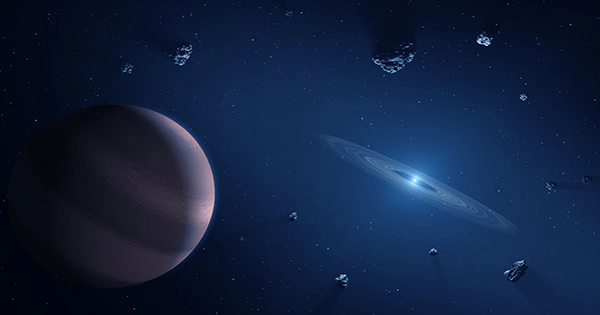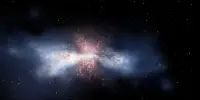Mercury, as the nearest planet to the Sun, is probably one of the most fascinating planets in the solar system. In comparison to our understanding of the Moon and Mars, we know very little about this hostile planet.
Mercury’s crust is largely made up of graphite, a pure type of carbon that can be converted into diamonds after being impacted by asteroids. The planet is riddled with craters caused by meteoroids and comets that have collided with it throughout the years. A treasure trove of diamonds might be planted into Mercury’s cratered crust.
Planetary scientist Kevin Cannon revealed on March 10 at the Lunar and Planetary Science Conference in The Woodlands, Texas, that billions of years of meteorite strikes may have flash-baked much of Mercury’s surface into the sparkling gemstones. According to his computer models, such collisions may have turned nearly one-third of the minuscule planet’s crust into a diamond hoard several times the size of Earth’s.
Diamonds are created at extremely high pressures and temperatures. On Earth, the jewels form deep down, at least 150 kilometers underground, and then ride to the surface during volcanic explosions. However, investigations of meteorites indicate that diamonds can form during impact.
Cannon utilized computers to recreate 4.5 billion years of strikes on a graphite crust to see how widespread this diamond forging could have been. The findings suggest that if Mercury had a 300-meter-thick graphite skin, the hammering would have produced 16 quadrillion tons of diamonds – around 16 times Earth’s estimated supplies.
Simone Marchi
“When those [impacts] occur, they generate really high pressures and temperatures that can change carbon into diamond,” explains Cannon of the Colorado School of Mines in Golden.
With impact-born diamonds on his mind, Cannon turned to the sun’s nearest neighbor. Surveys of the planet’s surface and experiments with molten rock indicate that the planet’s crust may include shards of an old shell of graphite, a carbon-based mineral. “We believe that when [Mercury] initially created, it had a magma ocean, and that graphite crystallized out of that magma,” Cannon explains.
Then, the bombardment. Mercury’s surface today is heavily cratered, evidence of an impact-rich history. Much of the purported graphite crust would have been battered and transformed into diamond, Cannon hypothesized.
Cannon utilized computers to recreate 4.5 billion years of strikes on a graphite crust to see how widespread this diamond forging could have been. The findings suggest that if Mercury had a 300-meter-thick graphite skin, the hammering would have produced 16 quadrillion tons of diamonds – around 16 times Earth’s estimated supplies.

“There’s no reason to doubt that diamonds may be generated in this manner,” says Simone Marchi, a planetary scientist at the Southwest Research Institute in Boulder, Colo., who was not involved in the study. But how many might have lived is a different issue, he says. Later strikes would have most likely destroyed some of the diamonds.
Cannon concurs that additional collisions would almost certainly obliterate some gems. However, because the final melting temperature of diamond surpasses 4000° Celsius, the losses would have been “extremely modest,” he claims. Future simulations, he says, will include remelting from impacts to refine the possible magnitude of Mercury’s current diamond reserves.
When the BepiColombo mission reaches Mercury in 2025, there may be an opportunity to scout for diamonds. According to Cannon, diamonds have a particular signature of infrared light. “And this may potentially be detected.”
Mercury, the smallest planet in our solar system and the closest to the Sun, is just slightly larger than Earth’s Moon. The Sun would appear more than three times as huge from the surface of Mercury as it does from Earth, and the sunlight would be up to seven times brighter.
The surface temperatures of Mercury are both exceedingly hot and incredibly cold. Daytime temperatures on the planet can exceed 800°F (430°C) due to its close proximity to the Sun. Temperatures can drop to -290°F (-180°C) without an atmosphere to keep the heat in during the night.
Mercury, despite its close proximity to the Sun, is not the hottest planet in our solar system; that honor goes to Venus, because to its dense atmosphere. But Mercury is the fastest planet, zipping around the Sun every 88 Earth days.
















